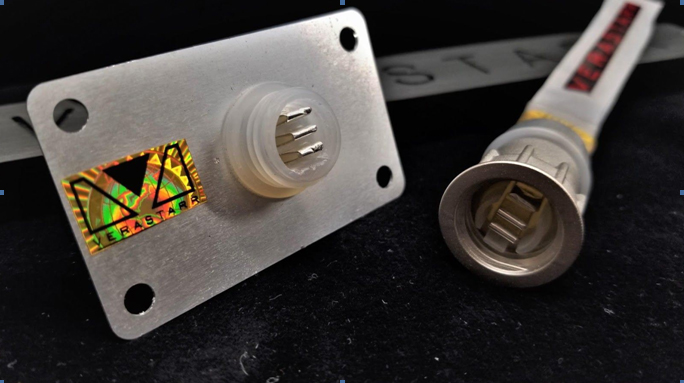Verastarr Debuts Evo “Connectorless” AudioFoil Interconnects and Cables
Atlanta, July 12, 2017—Connectors are one of the last frontiers of audio. Often made of dissimilar metals with the conductor and with wildly varying assortments of machined hardware, connectors and their conductor attachment interfaces present barriers to the undisturbed flow of musical signals. There can be as many as twelve breaks in the signal conductor using traditional connectors.
Audio technology company Verastarr has launched a new “Evo” series of “connectorless” AudioFoil interconnects and speaker cables that promise unprecedented improvement for high-resolution playback systems by removing the connector totally and compressing conductor to conductor thereby eliminating breaks in the transmission line.
“We created the new Verastarr Evo because we wanted a higher integrity connection scheme throughout the complete signal path, not just to the back of the component. That’s where design integrity goes out the window.” stated Verastarr founder Mike Powell. “We realized the optimal way to accomplish this was to eliminate the connector from the signal path all together and simply compress AudioFoil conductor directly to AudioFoil conductor, eliminating the undesired effects found in any reference level audio connector.
This is the first connection interface we know of that was designed ground up for the use of foils. Foils are superior to round wire for audio, as we discovered before releasing our award-winning Grand Illusion power cords 10 years ago.”
Verastarr’s “Evo” is connectivity that’s only two separations away from one single piece of foil between components, reducing eddy currents and distortion to nearly zero. “Evo” does not have a sound of its own but instead preserves the character of recordings and components in any audio system. The result: hearing your components revealed at their full 100% potential.
The genius of “Evo” is a “unibarrel” design that acts as both male and female RCA and XLR simultaneously. The cable plug has a threaded nut surrounding bare foils on angled “blades.” The chassis socket has a threaded outer edge plus three angled foil blades with the exact opposite angles. The barrel is keyed for correct insertion; once the two are mated the captive nut is rotated to compress the AudioFoil blades together, forming immediate strong contact.
“Previously, we had to make foils work with traditional round wire connectors. ‘Evo’ completes our refinement process,” Powell stated. “Solder connections along with existing RCA or XLR connectors are a half measure when it comes to systemic design integrity”. The best way to eliminate distortion is not to cause it in the first place. Therefore we deleted legacy RCA and XLR connectors. ‘Evo’ is a very ambitious design relaying our passion for the audio arts. ”
“Evo” unibarrels will fit existing XLR sockets or can be retrofitted in place of traditional RCAs. Internal wiring is then replaced with Verastarr AudioFoils, according to Powell.
“Evo” is already adapted for speaker cables; with power cords coming next.
The first examples of “Evo” technology will be shown at the California Audio Show in Oakland, July 28-30. Delivery is projected for fourth quarter 2017.
Verastarr Cables will be at the 2017 California Audio Show (CAS7) in Boardroom III, Bldg V
- (Page 1 of 1)


It may work well on a speaker with a single driver, no crossover. As soon as you have a crossover or a component with many parts inside, you get many solder joints and many different parts for the signal or power to go through. Foil does sound good however.